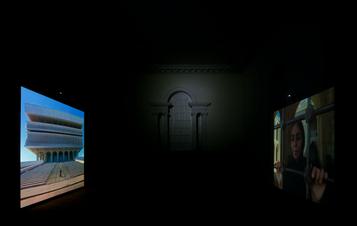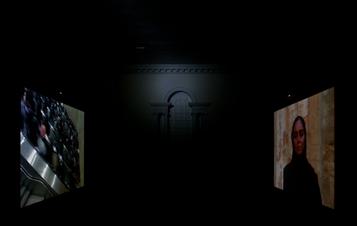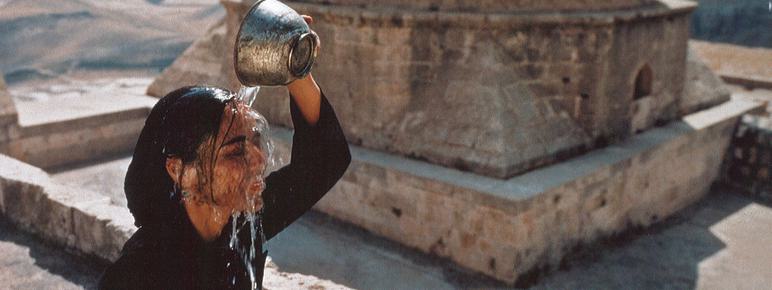
About Shirin Neshat: Soliloquy
YSP presented Soliloquy, a film by the Iranian artist Shirin Neshat, in the unique context of the Chapel.
On loan from Tate, the installation in YSP’s listed Georgian chapel provided a contemplative space for a rare showing of Neshat’s beautiful film, exploring themes of identity, exile and cultural history. With characteristic subtlety, Neshat renders East and West as cultures in exile from each other, but which have distinct parallels and possible points of connection, revealing beauty and difference within each place.
In Soliloquy Neshat uses architecture as a cultural reference, as she walks through two distinct landscapes; one in Mardin, Turkey and the other in Albany, New York. The two films make visual the state of longing and dislocation experienced as a result of being born in one country, living in another and belonging to neither. Using dual screen projections facing one another, the viewer is physically immersed in hauntingly beautiful imagery and evocative sound. Neshat has said that Soliloquy ‘aims to offer a glimpse into the experience of a divided self in need of repair’.
Neshat explores the ideology of Islamic society through study of the lives of women, such as those who live in her native Iran. In 2009 she was awarded the Silver Lion for Best Director at the Venice Film Festival for Women Without Men, which Mark Kermode has described as ‘a magical realist fable with a strong political backbone’.
Shirin Neshat was born in Qazvin, Iran in 1957 and left to study art in the US after leaving school. She was exiled in 1979 following the Iranian Islamic Revolution and now lives in the USA. Her work has been exhibited throughout the world and she has been working in film since 1996.
The project further demonstrated YSP’s commitment to the promotion of cultural understanding and engagement with diverse audiences. Associated activity included partnership work with City of Sanctuary for the 100th International Womens’ Day.
You might also like
More- Profile

Rupert Nabarro OBE

Louise Lockhart: Cake Crumbs and Lemonade
–Cake Crumbs and Lemonade will be the largest solo exhibition to date by illustrator Louise Lockhart (aka The Printed Peanut).- Art Outdoors
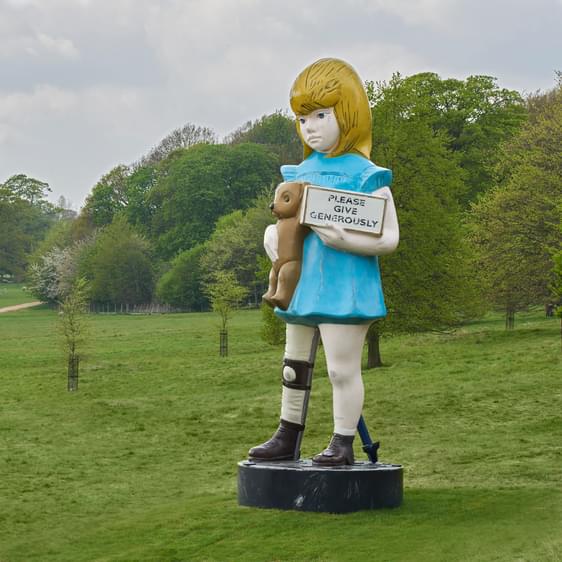
Damien Hirst: Charity
Charity is based on the Scope charity collection boxes that used to be common on British streets. On the walking route to The Weston, it features a young girl wearing a calliper and cradling a teddy bear. - News
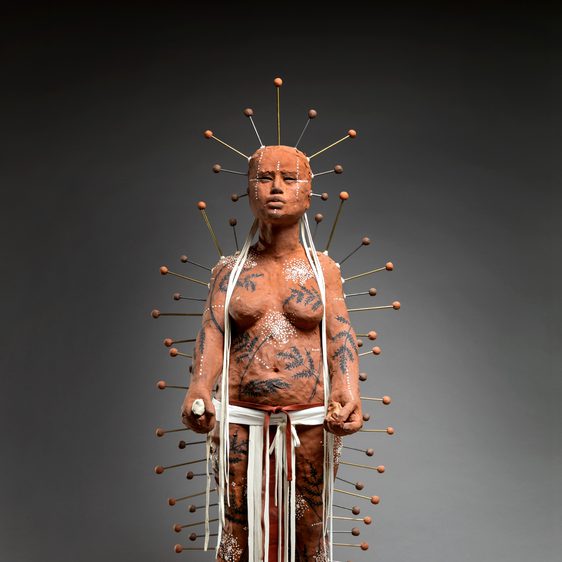
2026 Programme Announced
25 November 2025

